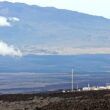A historic breakthrough
April 3, 2015
The P5+1 and Iran framework deal setting out the parameters of a long-term, comprehensive agreement to verifiably curb Iran's sensitive nuclear activities is a much-needed nonproliferation breakthrough. It promises to enhance US and international security by blocking Iran’s pathways to a nuclear weapon, including the covert path, and reducing Iran’s incentive to pursue nuclear weapons in the future. .
After months of intensive negotiations, particularly in recent days, the framework deal is more thorough and detailed than many if not most observers had expected. The provisions limiting Iran’s enrichment program would extend the time it would take Iran to acquire enough fissile material for one nuclear weapon to at least one year, by the US administration’s calculations. These limits would remain in place for 10 years. Iran’s current breakout timeline is currently assessed to be two to three months.
Iran also agreed to substantially modify the design of its heavy water research reactor at Arak, which, in combination with other measures, will ensure the reactor cannot be used to make plutonium for nuclear weapons.
Most important, the framework agreement outlines a remarkably strong and effective set of verification and monitoring provisions to ensure compliance with the agreed upon limits and greatly enhance the international community’s ability to detect and deter possible Iranian covert development of a nuclear weapon.
The framework agreement builds on the enhanced monitoring provisions already contained in the November 2013 joint plan of action agreed to by the Western powers and Iran, allowing for international access to and continuous monitoring of Iran’s uranium mines for 25 years and of centrifuge production and storage facilities for 20 years. Inspectors will also have access to the supply chain that supports Iran’s nuclear program, and a dedicated procurement channel for Iran’s nuclear program will be established to monitor and approve Iran’s transactions in certain nuclear-related and dual use materials and technology.
What’s more, Iran has agreed to implement the Additional Protocol, providing the International Atomic Energy Agency (IAEA) much greater access and information regarding Iran’s nuclear program, including both declared and undeclared facilities. Iran’s adherence to the Additional Protocol will be permanent.
The framework also provides a path forward to ensure the resolution of the IAEA’s outstanding questions about the past military dimensions of Iran’s nuclear program.
Successful implementation of a comprehensive deal would ultimately lead to the removal of nuclear-related international sanctions against Iran. However, the lessening of sanctions won’t happen all at once and will be conditioned on Iran’s compliance with a deal’s terms. Sanctions will snap back into place if Iran fails to meet its commitments.
Skeptics in the US Congress have already started to criticize the framework agreement on the grounds that it leaves Iran with too much nuclear capacity. They argue that the administration could have negotiated a better deal, and that more pressure could make Iran make additional concessions.
But these arguments are unconvincing. Insisting, for example, that Iran permanently halt all uranium enrichment is a non-starter. There is no viable strategy to secure a “better deal,” and if implemented, the framework concluded and announced April 2 is strong and effective enough barrier to a nuclear-armed Iran.
Many key details must be finalized over the next three months before the June 30 deadline to reach a final accord. The long road for an effective, comprehensive nuclear deal is far from completely traveled. But the United States is closer today than it has ever been to a deal that will greatly enhance US security and the security of its allies. Now is not the time for Congress to advance legislation that would undermine this vital diplomatic effort.
Kingston Reif
Director for Disarmament and Threat Reduction Policy
Arms Control Association













